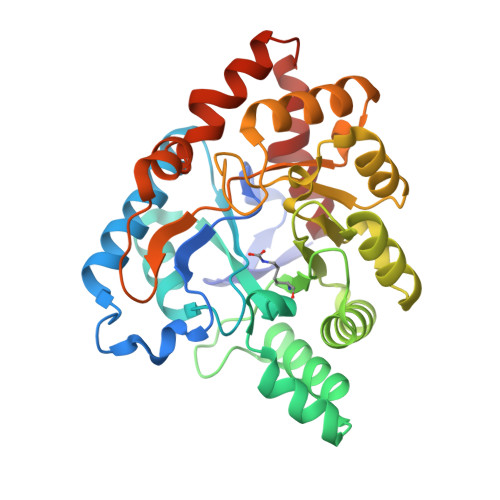Directed Computational Evolution of Quorum-Quenching Lactonases from the Amidohydrolase Superfamily.
Go, M.K., Zhao, L.N., Xue, B., Supekar, S., Robinson, R.C., Fan, H., Yew, W.S.(2020) Structure 28: 635
- PubMed: 32320671
- DOI: https://doi.org/10.1016/j.str.2020.03.011
- Primary Citation of Related Structures:
6JSS, 6JST, 6JSU - PubMed Abstract:
In this work, we present a generalizable directed computational evolution protocol to effectively reduce the sequence space to be explored in rational enzyme design. The protocol involves in silico mutation modeling and substrate docking to rapidly identify mutagenesis hotspots that may enhance an enzyme's substrate binding and overall catalysis. By applying this protocol to a quorum-quenching Geobacillus kaustophilus lactonase, GKL, we generated 1,881 single mutants and docked high-energy intermediates of nine acyl homoserine lactones onto them. We found that Phe28 and Tyr99 were two hotspots that produced most of the predicted top 20 mutants. Of the 180 enzyme-substrate combinations (top 20 mutants × 9 substrates), 51 (28%) exhibited enhanced substrate binding and 22 (12%) had better overall activity when compared with wild-type GKL. X-ray crystallographic studies of Y99C and Y99P provided rationalized explanations for the enhancement in enzyme function and corroborated the utility of the protocol.
Organizational Affiliation:
Department of Biochemistry, Yong Loo Lin School of Medicine, National University of Singapore, 8 Medical Drive, Singapore 117597, Singapore; NUS Synthetic Biology for Clinical and Technological Innovation, 14 Medical Drive, Singapore 117599, Singapore.



















